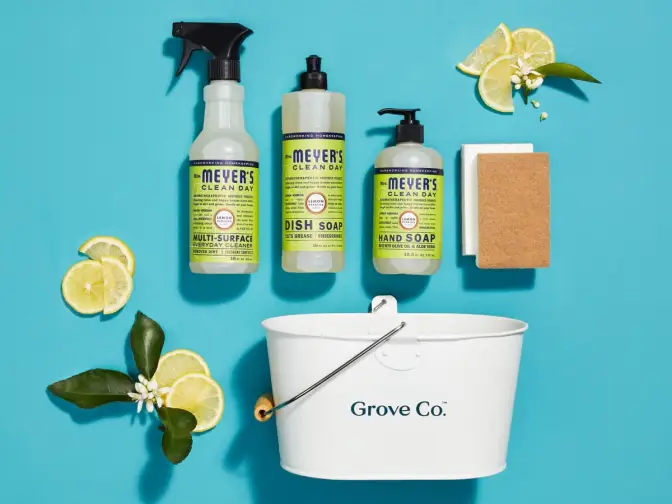What are the Best Alternatives to Plastic Straws
Need an eco-friendly straw? Check out our guide to the best alternatives to reduce plastic waste from single-use products.
Read More

Last Updated: June 30, 2022
Silicone is in everything from baby bottles to cookware. But isn’t it just plastic? And don’t we hate plastic now? We’ve got answers from the experts here.
Silicone is having a serious moment. Straws, utensils, food storage, personal care containers, and even pet bowls are jumping on the train. Unlike low quality plastics, it is widely reusable and doesn’t have nearly as much chemical volatility as plastic does.
But this rise in popularity has led to a lot of questions about its ingredients, safety, and sustainability. We’ve got the deets and are here with a primer on all things silicone.
Silicone can be considered a type of rubber, which, under the broadest definitions, could be considered a kind of plastic.
Not exactly. Like plastic, it is highly malleable, which is why you see it in all kinds of forms, from harder structures like phone cases to softer ones like flexible straws.
It’s also clear, temperature-resistant, and waterproof, similar to most plastics. But don’t get them mixed up—it’s made from very different materials than most plastic products.
Most silicone products are highly reusable, unlike single-use plastics. This makes them a better choice for the planet. But are they a better choice health-wise too?
GROVE TIP
While there isn’t much difference between the finished products, the beginning stages of liquid silicone (LSR) and solid silicone are pretty clear. One starts as a liquid and one starts as a solid and is less flexible.
LSR tends to produce more clear products and solid silicone tends to make more opaque products, but both are safe, heat-resistant, and reusable.

It is made up of a mix of synthetic and chemical elements. The big differentiator between silicone and traditional plastic is the key ingredient: silicon.
Even though it's an element in the Earth and on the periodic table, it’s hard to find it all by its lonesome. More often than not, silicon is found in the form of silicon dioxide, aka the abundant element silica sand (or quartz sand). Basically derived from sand found in the Earth’s crust, silicon is not created naturally and has to be produced once it’s mined from the Earth in its silica form.
Separating it from everything else is an intense process, usually requiring a carbon fuel source to superheat the oxygen out of the silicon. Daniel Mance, a QHSE supervisor for Simcoa, a leading producer of silicon, details the process in this video.
Once the pure silicon is isolated, it goes through a distillation process where it’s mixed with hydrocarbons and other chemical compounds depending on the desired final material makeup.

Like most of the things we love, it seems to be quite safe, but there’s a lack of scientific research to confirm whether it has any long-term negative effects on humans. Regardless, both US and Canadian government agencies consider it very safe, even for food and medical use.
Not everything is sunshine and rainbows, though. One 2012 study found that, although more inert than plastic, silicone is not completely chemically unreactive, and, under prolonged stress, can leach chemicals. Considering it is in everything from cookware to baby bottles, more comprehensive research should definitely be conducted.
GROVE TIP
Yes! There’s a reason you see it in oven mitts and other cooking utensils because it’s very stable and has low thermal conductivity when it encounters high temperatures. That means it doesn’t lose its shape or structure aka melt.
Another knock against it is that it’s very difficult to recycle. Like flexible plastics and rubbers, silicone products can only be recycled at specialized recycling facilities.
These facilities will often down-cycle silicone into a different product, such as an oil or lubricant. Because of its plastic-y, rubber-y nature, it takes hundreds of years to decompose, which makes it a challenging ingredient from a sustainability perspective.
Although it is super easy to clean, some questions still remain about long-term safety, so it’s best to use a few common-sense practices when you use silicone-based products.
This is especially true with cookware, since you and your family will be eating out of these materials. Follow the tips below to ensure you’re getting the best quality products to use with your food.

There are many different kinds of silicone out there, and not all of them are made with cooking in mind.
Make sure your products are food-grade and from a reputable, high-quality brand.

Test your products to see if they use filler-ingredients instead of a pure silicone formula.
Pinch or twist a flat part of the silicone. If the color changes to white, the product has a filler ingredient—pure silicone does not change color.

We talk about the benefits of handwashing often. For extra sensitive, extra important items like baby products, it’s best to stick to handwashing.
This will make them last longer and give you the ability to eyeball them to see if they need to be replaced.

While certainly better than plastic, there are better, less reactive products out there for intense cooking and grilling.
Consider stainless steel, glass, or ceramic products when you fire up the grill or go to roast food in the oven.
Silicone has some great uses and can definitely be preferable to plastic. Just remember to bring it to a specialized recycler when it’s ready to be disposed of and employ some extra caution for cooking and baby care products.
Need an eco-friendly straw? Check out our guide to the best alternatives to reduce plastic waste from single-use products.

Recycling makes us all feel virtuous and holy, but you might be unknowingly poking holes in the process by "wish" recycling non-recyclable items.

Discover three durable and sustainable food storage solutions that will help you minimize waste while maintaining convenience.

Here’s how to go plastic free if you're just getting started — and how to level up if you're ready to make a plastic-free commitment.

Wondering who Grove is, what types of products we offer, and how to get a free gift set when you sign up? Learn more about flexible monthly shipments, customizing your shipment, and joining millions of happy households — no monthly fees or commitments required.